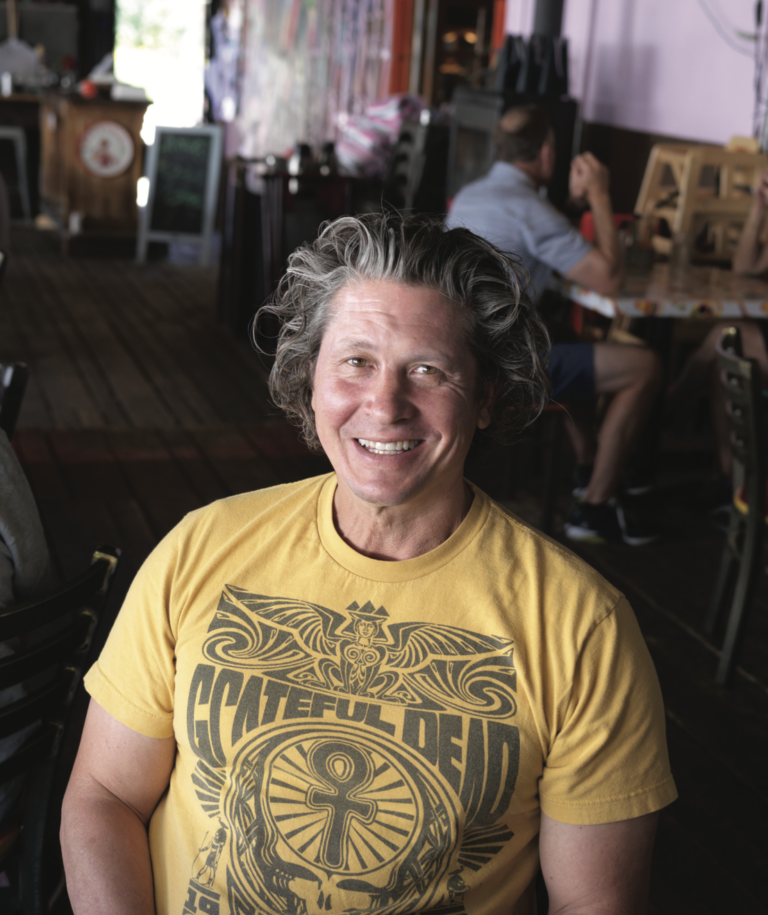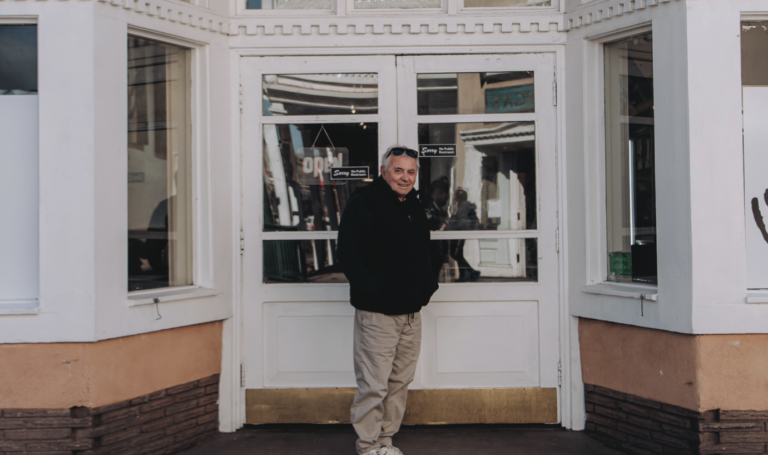WALK INTO CRATE AND BARREL, Restoration Hardware, or pretty much any modern furniture store, and you’ll be surrounded by “furniture as art.” As commonplace as this concept is now, it simply didn’t exist 50 years ago. That’s when Jim Evanson moved to New York and started designing furniture based on his two-dimensional artwork.
In 1979, he had his first showing at Art et Industrie, which was exploring the concept of craft as art. The gallery was the centerpiece of a movement of artists and designers who created unique, handmade, limited-edition pieces. Within a few years, Jim was at the core of the movement, inventing what became known as “functional art.” Ettore Sottsass and Memphis Design mirrored this same idea in Italy; when they made their way to these shores, the concept exploded. Furniture became art.
Besides being an artist and furniture designer, Jim is also an award-winning architect. So when he moved to Santa Fe, of course he designed his home and offices. That’s where we sat down to hear how, in 1980, the world started to look a little different.
What exactly is the “functional art” movement?
I started out as a two-dimensional artist – watercolors, silkscreens – In Los Angeles. But then I started exploring construction methods, how to formalize them, and started hanging wood and concrete structures on the walls. I was interested in combining art and construction. My next idea was turning a flat file cabinet into a sculpture, experimenting with different trapezoid shapes. They got a lot of attention, but reviewers were awfully confused. I guess I was on the right track.
And then you moved to New York?
I moved in 1976. I was born in Montana and had always wanted to live in New York. So I took my dad’s ’57 Chevy Pickup and the $3,000 I had to my name and went.
I wound up living in Manhattan for 40 years. I had a loft on Bond Street back when there were still artists in NoHo. That’s where I met Rick Kauffman, who founded Art et Industrie, a store that sold the high-tech look. He started selling my flat files.
Rick was working with the Italian designer Alessandro Mendini, who was doing Domus – probably the most important design magazine of the time. Kaufman and Mendini told me about this new art movement, which was about furniture as art. If something was decorated, it had to be integral to the three-dimensional object.
So a handful of us began working with wood, metal, concrete; creating tables, chairs, desks, and lamps. I worked with the primary elements – circle, triangle, square – in an architectural sense. The design had to be functional.
We contributed our pieces to the gallery and then Rick started bringing in Mendini and the new Ettore Sottsass and Memphis Design pieces from Italy. They had been doing the same thing, and that’s when it all really blew up. Boy, those Italians had an amazing PR machine behind them.
This might all seem commonplace now, but it was a totally new idea in 1980. I remember seeing a reviewer’s headline: Is It Art or Furniture? They couldn’t figure it out. Honestly, it was really confusing for a lot of people for quite some time.
WANT TO READ MORE? SUBSCRIBE TO SANTA FE MAGAZINE HERE!
Photo SFM









